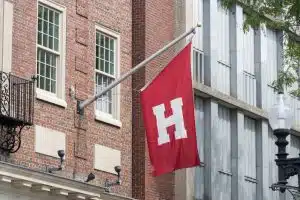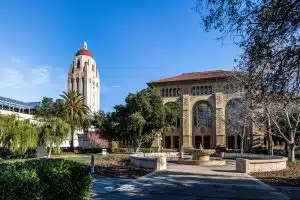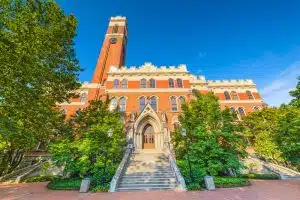Exploring Need-Blind Colleges in 2021
As we move into a new year, the topic of higher education continues to be at the forefront of many discussions. One particular area that is receiving increasing attention is the concept of need-blind colleges. This unique approach to admissions is transforming the landscape of higher education, and promoting inclusivity.
Understanding the Concept of Need-Blind Admission
The fundamental principle behind need-blind admission is straightforward – admission decisions are made without considering the financial need of the applicant. The ideology focuses purely on the merit of the student, keeping an unbiased lens throughout the admission process.
However, the concept of need-blind admission goes beyond just a simple admission policy. It represents a belief in equal access to education, regardless of an individual’s financial circumstances. It is a commitment to providing opportunities for talented students from all walks of life, ensuring that they have a fair chance to pursue their dreams and reach their full potential.
Need-blind admission policies are often implemented by prestigious universities and colleges that have the resources to support students with financial aid packages. These institutions understand that a student’s ability to pay for tuition should not be the determining factor in their admission decision. Instead, they focus on evaluating the applicant’s academic achievements, extracurricular involvement, and personal qualities.
The Philosophy Behind Need-Blind Admission
The underlying philosophy of need-blind colleges is rooted in the concept of equal opportunity for all. The institutions believe that financial circumstances should not hinder a deserving student’s chance to receive quality education. They strive to level the playing field by admitting students solely based on their academics, extracurricular activities, and personal attributes.
By adopting a need-blind admission policy, colleges and universities aim to create a diverse and inclusive learning environment. They recognize that students from different socio-economic backgrounds bring unique perspectives and experiences to the classroom, enriching the educational experience for all. This philosophy aligns with the principles of social justice and equity, ensuring that education remains a powerful tool for social mobility.
Moreover, need-blind admission policies also contribute to the overall reputation of an institution. By attracting a diverse pool of talented students, colleges and universities can enhance their academic standing and foster a vibrant intellectual community.
The Impact of Need-Blind Admission on College Diversity
Need-blind admissions have paved the way for greater diversity in college campuses. Dismissing financial obstacles creates the opportunity for students of various socio-economic backgrounds to occupy the same academic space. This eclectic mix is breeding grounds for broad perspectives, encouraging a dynamic and vibrant campus culture.
When students from different economic backgrounds come together, they learn from each other’s experiences and gain a deeper understanding of the world. This exposure to diverse perspectives fosters empathy, tolerance, and cultural competence, all of which are essential skills in today’s globalized society.
Furthermore, the impact of need-blind admission extends beyond the college years. Graduates from diverse backgrounds bring their unique perspectives and experiences into the workforce, contributing to innovation, creativity, and problem-solving in various industries. They become agents of change, advocating for social justice and equality in their respective fields.
In conclusion, need-blind admission is not just a policy, but a reflection of a college’s commitment to equal opportunity and diversity. By admitting students based on merit rather than financial need, institutions create an environment that fosters academic excellence, social mobility, and a more inclusive society.
The Current State of Need-Blind Colleges
Even with its noble intentions, the reality of need-blind colleges encompasses both favorable and challenging aspects. Let’s delve a bit deeper into the current state of these institutions.
Need-blind colleges, with their commitment to admitting students regardless of their financial circumstances, play a crucial role in promoting equal access to education. However, the landscape of need-blind colleges in the United States is not as extensive as one might hope.
Need-Blind Colleges in the U.S.
Need-blind colleges face a myriad of financial considerations when committing to admitting students without regard to their ability to pay. These colleges understand the importance of creating a diverse and inclusive student body, but they also have to grapple with the financial implications of their decisions.
Approximately 100 colleges and universities across the United States practice need-blind admissions for U.S. students. However, it’s important to note that not all institutions offering need-blind admissions are able to meet the complete demonstrated financial needs of every admitted student.
It is worth noting that need-blind colleges are not only concerned with the initial cost of admitting students. They also commit to covering the demonstrated need for all admitted students throughout their entire academic journey. This means that these colleges must allocate significant resources to financial aid programs, scholarships, and grants to ensure that students can afford their education.
Let’s explore top colleges in 2021 that offer need-blind admissions and provide financial need-based aid, combining scholarships, grants, and work-study programs, without student loans:
- Columbia University (New York, New York)
- Undergraduate students: 8,148
- Average financial aid award (2019–20): $55,773
- Columbia University leads as a need-blind college, ensuring financial need doesn’t affect admissions. The university meets the demonstrated need of admitted students, with over 40% receiving a parental contribution of less than $5,000.
- Harvard University (Cambridge, Massachusetts)
- Undergraduate students (2020): 8,527
- Average financial aid package (2019–20): $55,389
- Harvard combines need-blind admissions with 100% need-based financial aid. About 1 in 5 Harvard families contributes nothing to the cost of education.
- Amherst College (Amherst, Massachusetts)
- Expected undergraduates (2020): 1,745
- Average financial aid award (2019–20): $55,252
- Amherst’s need-blind admissions tradition extends back to its founding in 1821. The college follows a no-loan policy and awarded over $60 million in scholarships in 2020–21.
- Princeton University (Princeton, New Jersey)
- Undergraduate students (2020): 4,774
- Average financial aid package (2019–20): $52,437
- Princeton University guarantees to meet every student’s demonstrated need without loans, and this extends to international students.
- Stanford University (Stanford, California)
- Estimated undergraduates (2020): 6,366
- Average financial aid award (2019–20): $51,725
- Stanford follows a need-blind admissions policy and assesses financial need based on each family’s circumstances.
- Swarthmore University (Swarthmore, Pennsylvania)
- Undergraduate students: 1,437
- Average financial aid award (2019–20): $51,291
- Swarthmore employs need-blind admissions, offering Swarthmore Scholarships to 55% of students.
- Massachusetts Institute of Technology (Cambridge, Massachusetts)
- Pomona College (Claremont, California)
- Expected undergraduates (2020): 1,475
- Average financial aid award (2019–20): $49,264
- Pomona College follows a need-blind admissions policy and meets every student’s demonstrated financial need.
- Brown University (Providence, Rhode Island)
- Total undergraduates (2020): 6,792
- Typical aid package (2019–20): $47,914
- Brown guarantees to meet every demonstrated financial need while also employing need-blind admissions.
- Bowdoin College (Brunswick, Maine)
- Undergraduate students (2020): 1,777
- Average financial aid package (2019-20): $46,203
- Bowdoin is a small liberal arts college that does not take financial need into account during admissions.
- University of Chicago (Chicago, Illinois)
- Estimated undergraduates (2020): 7,056
- Average financial aid award (2019–20): $42,948
- UChicago offers need-blind admissions and promises to meet all demonstrated financial needs.
- Davidson College (North Carolina)
- Undergraduate students (2020): 1,983
- Average financial aid award (2019–20): $40,788
- Davidson College has a need-blind admissions policy and ensures that all students’ financial needs are fully met without loans.
These institutions embody the commitment to providing inclusive education by embracing need-blind admissions and robust financial aid packages.
The Financial Challenges for Need-Blind Colleges
Despite the significant benefits to students, the application of need-blind policies poses financial strains on the institutions. These colleges commit to covering the demonstrated need for all admitted students, which sometimes poses a considerable challenge.
One of the primary financial challenges faced by need-blind colleges is the unpredictability of student enrollment and financial need. Each year, colleges have to anticipate the number of students who will require financial aid and the amount of aid they will need. This uncertainty makes budgeting and financial planning a complex task for these institutions.
Furthermore, need-blind colleges often rely on their endowments to fund their commitment to financial aid. While colleges with substantial endowments are better equipped to sustain a full need-blind policy, those with smaller endowments may struggle to meet the financial demands. These colleges may have to make difficult decisions, such as limiting the number of need-blind admissions or reducing the amount of financial aid offered.
Despite these challenges, need-blind colleges continue to prioritize the accessibility of education for all students. They work tirelessly to secure funding, seek philanthropic support, and explore innovative financial strategies to ensure that no student is denied admission due to their financial circumstances.
Evaluating the Admission Process of Need-Blind Colleges
In the realm of higher education, the admission process plays a pivotal role in shaping students’ academic journeys. Evaluating the admission process of need-blind colleges unveils a deeper understanding of how these institutions prioritize accessibility and financial support for aspiring scholars.
The Role of Financial Aid in Need-Blind Admission
At the heart of the need-blind admission process lies the commitment to provide sufficient financial aid to those who qualify. The goal here is to ensure that the ability to pay does not dictate the ability to study. Need-blind colleges undertake the responsibility to meet the qualifying students’ full demonstrated need, which is assessed through detailed financial aid applications.
Financial aid offices at need-blind colleges employ a team of dedicated professionals who meticulously review each application. They consider various factors, such as family income, assets, and expenses, to determine the level of financial assistance required. This process involves careful analysis and often requires additional documentation, such as tax returns and bank statements, to verify the information provided.
Once the financial aid package is determined, it is communicated to the student along with the admission decision. This ensures that the student can make an informed choice about attending the college, knowing that their financial needs will be met.
The Academic Requirements for Need-Blind Admission
The focus of need-blind colleges on financial neutrality doesn’t translate to lax academic standards. In fact, these institutions often maintain rigorous academic requirements to garner a spot. Despite the worthy philosophy, competition is often stiff, as many accomplished students vie for a place in these esteemed colleges.
Need-blind colleges seek students who not only demonstrate financial need but also possess exceptional academic abilities. Admissions committees carefully review applicants’ high school transcripts, standardized test scores, letters of recommendation, and personal essays to assess their academic potential.
Furthermore, need-blind colleges value diversity in their student body. They actively seek students from different backgrounds, cultures, and experiences to create a vibrant and inclusive community. Admissions officers consider factors such as extracurricular activities, leadership roles, and community involvement when evaluating applicants.
It is important to note that while need-blind colleges do not consider an applicant’s financial situation during the admission process, they may still consider other factors such as legacy status or athletic abilities. These additional considerations, however, vary from college to college and are not universal across all need-blind institutions.
In conclusion, the admission process of need-blind colleges is a comprehensive evaluation of an applicant’s financial need and academic potential. By providing sufficient financial aid and maintaining high academic standards, these institutions strive to create an inclusive and diverse student body.
The Pros and Cons of Need-Blind Colleges
Like any policy or practice, need-blind admissions also come with their advantages and potential pitfalls. Need-blind colleges have become increasingly popular in recent years, as they strive to create a more equitable and inclusive higher education system. These institutions are committed to eliminating economic barriers to education, ensuring that students from all financial backgrounds have equal opportunities to pursue their academic goals.
By not considering an applicant’s financial need during the admissions process, need-blind colleges help widen access to quality education for students regardless of their financial circumstances.
One of the most evident benefits of attending a need-blind college is the opportunity to be part of a diverse learning environment. These institutions attract students from various socioeconomic backgrounds, cultures, and geographic locations. This diversity enriches the overall college experience by exposing students to different perspectives, ideas, and ways of life. It fosters a sense of inclusivity and helps students develop a broader understanding of the world around them.
Moreover, need-blind colleges often have robust financial aid programs in place to support students who require assistance. These programs can include scholarships, grants, work-study opportunities, and low-interest loans. By offering financial aid packages tailored to individual needs, these colleges strive to ensure that no student is denied an education due to financial constraints.
However, despite their admirable goals, need-blind colleges do have potential drawbacks that need to be considered. One major concern is the financial strain placed on these institutions. Admitting students without considering their financial need can put a significant burden on the college’s budget.
Providing financial aid to a large number of students can be challenging, especially if the college relies heavily on tuition revenue to cover its expenses. This financial strain may impact the college’s ability to invest in other areas, such as infrastructure, faculty development, and research opportunities.
Another potential drawback of need-blind colleges is the rigorous academic competition that comes with the admissions process. As these colleges attract a large pool of highly qualified applicants, the competition for limited spots can be intense. Students may feel additional pressure to stand out academically, participate in extracurricular activities, and demonstrate leadership skills. This added stress can potentially impact the mental health and well-being of students during the application process.
Future Trends in Need-Blind College Admissions
As we peer into the future of need-blind college admissions, certain trends and patterns begin to emerge.
Need-blind college admissions have been a topic of great interest and debate in recent years. The concept of need-blind admissions refers to the practice of admitting students to colleges and universities without considering their financial need. This approach aims to create equal opportunities for all students, regardless of their economic background.
The Influence of Economic Factors on Need-Blind Admissions
The economic climate plays a pivotal role in dictating the feasibility of need-blind practices. In periods of economic strain, colleges may find it especially challenging to maintain these policies. However, they strive to be as inclusive as possible, leveraging financial aid packages and scholarships.
Colleges and universities understand the importance of providing access to education for students from all walks of life. They recognize that economic factors should not be a barrier to higher education. Therefore, even in times of economic uncertainty, institutions work diligently to ensure that need-blind admissions remain a priority.
Predictions for Need-Blind Admissions in the Coming Years
Certain trends indicate a potential growth in the adoption of need-blind policies. Educational institutions are recognizing the value of a diverse student body and are aiming to mirror this sentiment in their admission policies. While there may still exist financial constraints, it’s notable that colleges are increasingly adopting flexible financial aid models to cater to students’ needs.
Looking ahead, it is expected that more colleges and universities will embrace the need-blind admissions approach. This shift is driven by the understanding that diversity enhances the educational experience for all students. By admitting students without considering their financial need, institutions can create a vibrant and inclusive learning environment.
Furthermore, the rise of philanthropic initiatives and partnerships with corporations and foundations has provided additional resources for colleges to support need-blind admissions. These collaborations enable institutions to offer more scholarships and financial aid packages, making higher education more accessible to students from disadvantaged backgrounds.
In conclusion, need-blind admission policies signify an important stride towards fair access to education. While they come with their distinct challenges, these policies are fostering academic opportunities and creating vibrant and diverse campus communities. As we continue traversing the path of higher education, the concept of need-blind colleges will likely gain more prominence, influencing future patterns of college admissions prominently.
In navigating the complex landscape of need-blind colleges, prospective students often seek expert guidance and strategies to craft compelling applications that open the doors to these institutions. AdmissionSight, with its wealth of knowledge and experience, is a valuable ally on this journey. Our team is dedicated to empowering students, providing personalized insights, and offering comprehensive support in the pursuit of academic excellence and the dream of attending need-blind colleges.
Whether it’s deciphering intricate admission processes, acing standardized tests, or perfecting personal essays, AdmissionSight is committed to helping students present their best selves and embark on a transformative educational adventure.









































